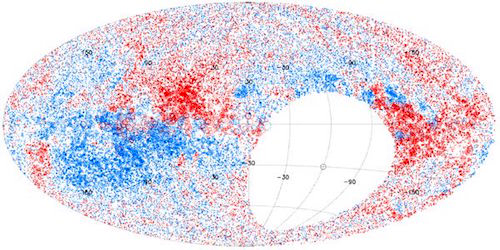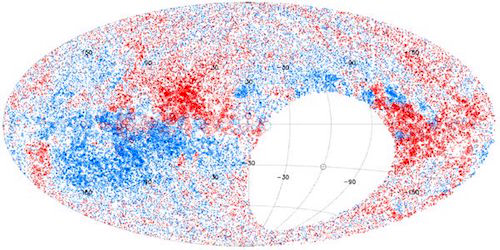Cosmic Magnetism Revisited
Magnetic fields are all over the place in the cosmos. Planets, stars, galaxies, and clusters of galaxies are all spanned by magnetic fields of known magnitude. A weaker field is also thought to permeate the Universe on larger, cosmological scales. But what is the strength of this cosmological field? To try to answer this question, Maxim Pshirkov from Lomonosov Moscow State University, Russia, and colleagues have turned to a large survey of distant radio sources whose radiation is affected by the magnetic field it passes through. The data allowed them to put a tight upper limit on the strength of the cosmological magnetic field.
When polarized radiation from a distant source crosses the space between the source and the Earth, the radiation’s polarization plane will be rotated by an angle that depends on the strength of the magnetic field that fills the space. The effect, known as Faraday rotation, therefore provides a means to estimate the field’s strength. Pshirkov and co-workers used existing rotation measurements from about 3000 radio sources spread over a large area of the sky, subtracting from the measurements the effect of the Milky Way’s magnetic field. By comparing the data with models of the expected rotation for a given cosmological-field strength, the researchers were able to derive an upper limit on the strength of about 1 nG, a fivefold improvement over the current one. A field as small as 1 nG implies, for example, that ultrahigh-energy cosmic rays will travel relatively unaffected on their way to Earth—a result that may help researchers find the sources of these particles.
This research is published in Physical Review Letters.
–Ana Lopes
Ana Lopes is a Senior Editor of Physics.





